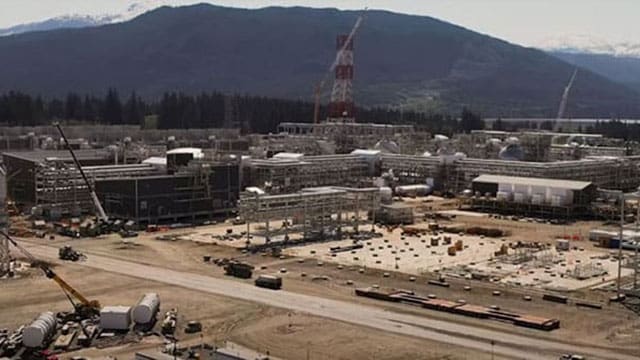Residents of Kitimat are earning top wages because of the LNG industry and LNG Canada
 Even though Kitimat, B.C. receives around two metres of rain a year, nothing can dampen the spirit of its three-term mayor when it comes to the emerging liquefied natural gas (LNG) export industry and its benefits.
Even though Kitimat, B.C. receives around two metres of rain a year, nothing can dampen the spirit of its three-term mayor when it comes to the emerging liquefied natural gas (LNG) export industry and its benefits.
Phil Germuth is enthusiastic as he speaks about the west coast town of 9,000 permanent residents. There’s a lot happening – around 6,000 camp-based construction workers at the LNG Canada site within eyeshot of town and 6,000 in the region and beyond working to complete the Coastal GasLink pipeline. The proposed Cedar LNG terminal, 50 percent owned by the Haisla Nation, will also create hundreds of construction jobs.
“Kitimat is a great example of Canadian industries that are at the leading edge of environmental protection,” says Germuth, who owns a local automotive repair business.
“We have Rio Tinto, our smelter here, that’s newly rebuilt and producing the greenest aluminum anywhere in North America, and we have the LNG Canada facility (that), when up and running, will have the lowest carbon footprint of any major LNG facility on earth.”
 Photo courtesy LNG Canada |
| Related Stories |
| Haisla Nation-owned Cedar LNG project on fast track
|
| Montney play driving the future of Canadian LNG
|
| Canada has the potential to be a natural-gas powerhouse
|
The $18 billion first phase of LNG Canada is forecast to begin operating in 2025 and will create 300 to 450 direct long-term jobs. The $3 billion Cedar LNG project has regulatory approval to proceed under 250 binding conditions and could be in operation by 2027 with around 100 permanent jobs. The $14.5 billion Coastal GasLink pipeline, stretching 670 kilometres from northeast B.C. to Kitimat, is scheduled for completion in 2023 and will supply natural gas to LNG Canada and Cedar LNG.
After reaching the west coast, pipeline gas will be converted to LNG, pumped onto vessels, and shipped out the Douglas Channel to open ocean – primarily to Asian markets to meet rising energy demand while helping lower emissions by displacing coal-fired power generation.
According to the International Energy Agency, switching from coal to natural gas reduces emissions by half on average. Canadian LNG can deliver an even more significant decrease, reducing emissions by up to 62 percent, according to a June 2020 study published in the Journal for Cleaner Production.
Two new hotels have been built to support Kitimat’s LNG industry, says Germuth, noting workers are spending money at local businesses. A new brewery has opened. Thirty-six new homes are being built. The Haisla Bridge, which connects Kitimat to its industrial area, is being replaced – a $55 million project.
“The economy is doing well,” he says, noting many residents are renovating their homes with the confidence of a return on investment.
According to statistics compiled by the District of Kitimat, residents are earning top wages. Median household income grew from $98,300 in 2017 to $111,500 in 2020, while median individual income rose from $49,600 to $57,300.
The number of businesses in Kitimat grew from 216 in 2017 to 250 in 2022. Business license sales rose from five percent to 10 percent year-on-year since 2017 – currently at a record high of 766 new licenses. Rental vacancy has dropped from 44.1 percent in 2018 to 23.8 percent in 2023.
A benefit of Kitimat’s nascent LNG industry is an improved relationship between local Indigenous people and the town, says Germuth, adding LNG Canada sets a high standard when it comes to consultations with First Nations.
“Before, the relationship between the Haisla Nation Council and the District of Kitimat really wasn’t there,” he says. “LNG Canada came in and what they started doing is bringing us together.”
Germuth is hoping for another LNG terminal or hydrogen facility. However, there’s more to Kitimat than heavy industry, he says. The region is replete with natural beauty and outdoor recreation opportunities – from fishing to mountain biking.
“We are very fortunate,” he says.
James Snell is a multimedia journalist based in Alberta. This article was submitted by the Canadian Energy Centre, a Troy Media Editorial Content Provider Partner.
For interview requests, click here.
The opinions expressed by our columnists and contributors are theirs alone and do not inherently or expressly reflect the views of our publication.
© Troy Media
Troy Media is an editorial content provider to media outlets and its own hosted community news outlets across Canada.

